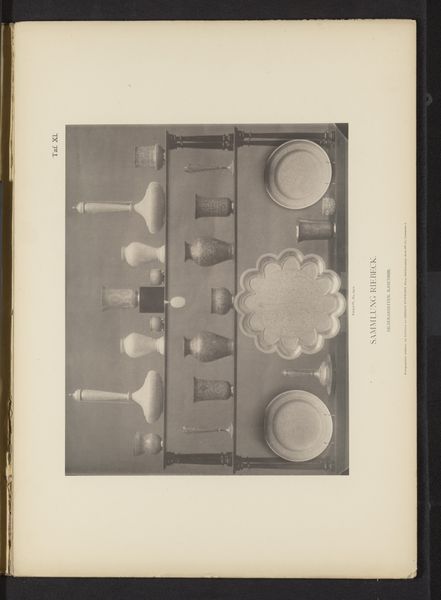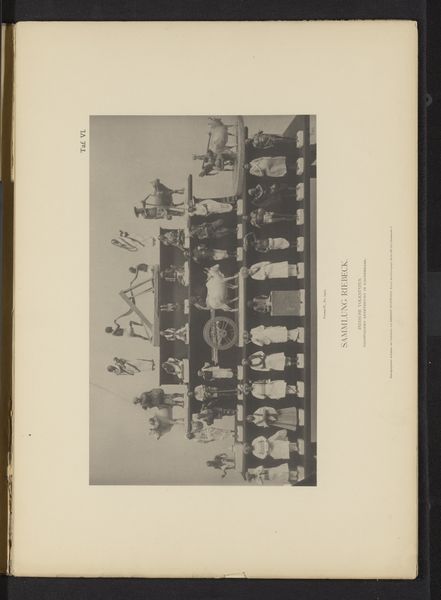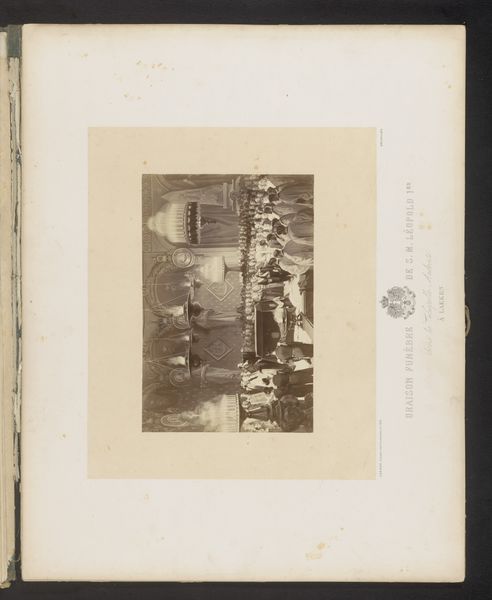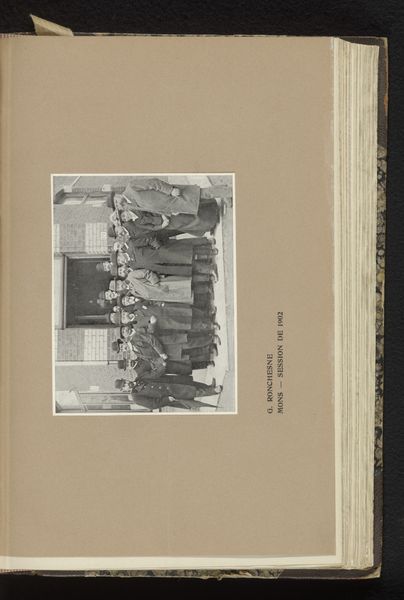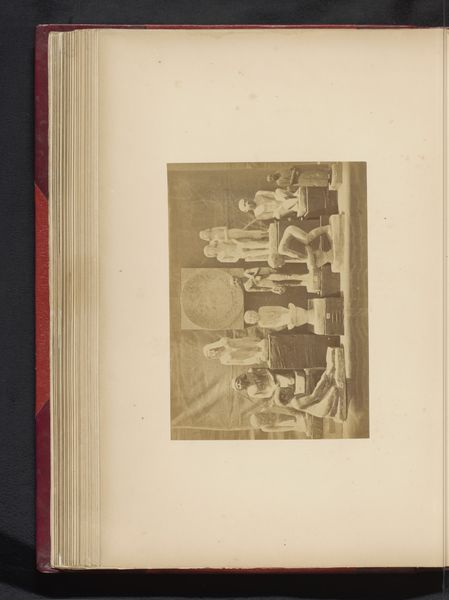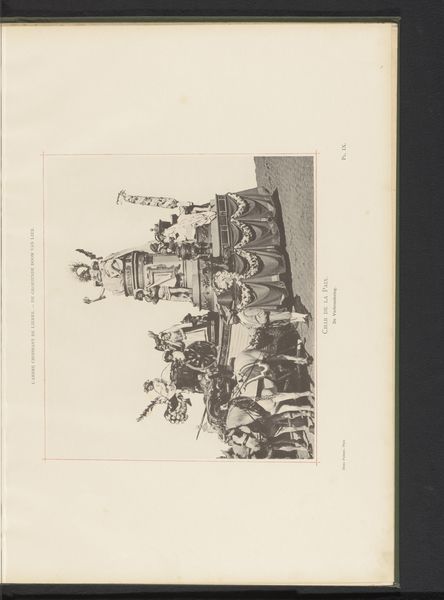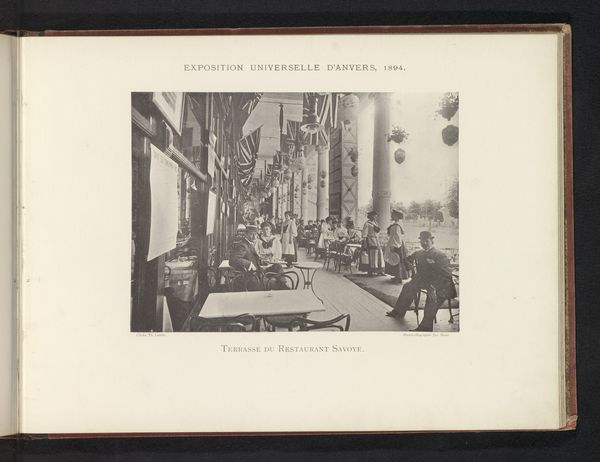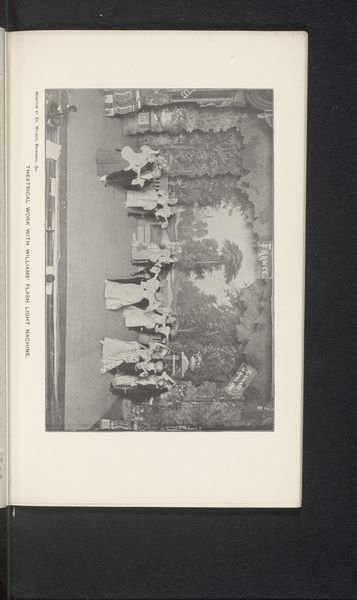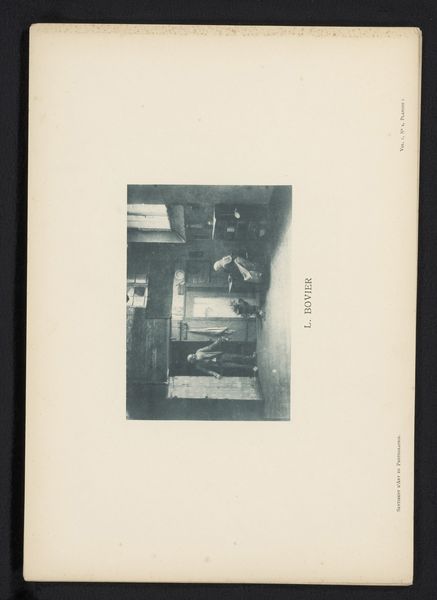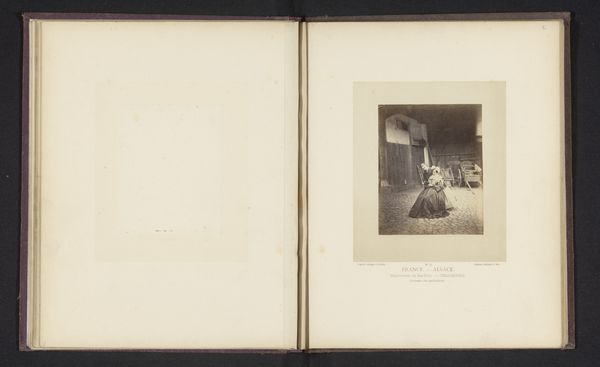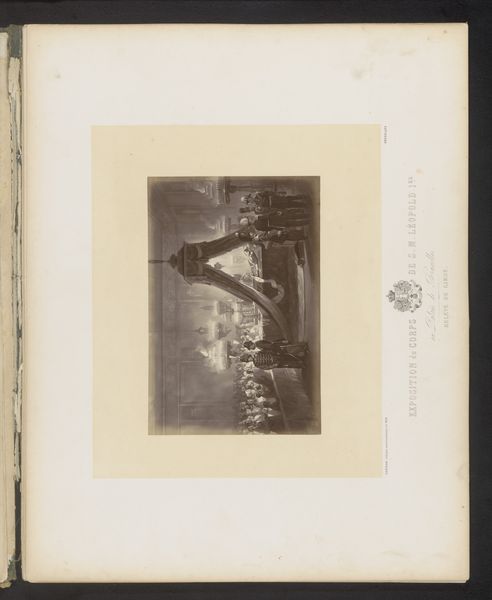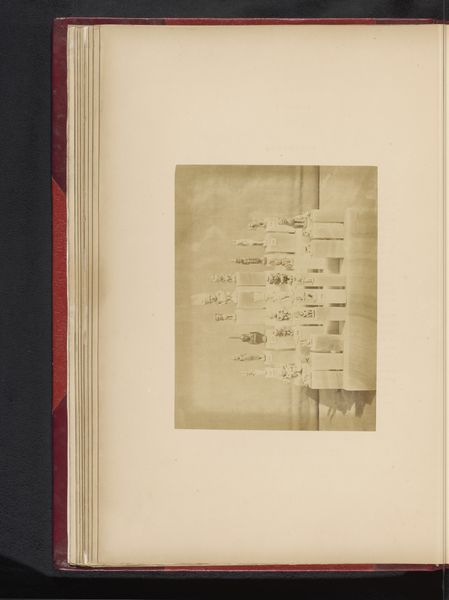
Bronzen objecten uit Japan uit de verzameling van Emil Riebeck, op de binnenplaats van het Kunstgewerbemuseum in Berlijn 1884
0:00
0:00
photography
#
asian-art
#
photography
Dimensions: height 191 mm, width 327 mm
Copyright: Rijks Museum: Open Domain
Curator: Immediately I’m struck by the stillness, almost a memorial atmosphere, like a photograph capturing a collection frozen in time. Editor: Yes, Hermann Rückwardt produced this photographic print around 1884. It depicts a display of Emil Riebeck’s collection of Japanese bronze objects in the courtyard of the Kunstgewerbemuseum in Berlin. The objects are displayed on shelves—plates, vases, sculptural elements—lit evenly. Curator: Given the date, it screams "Japonisme!"—the way these artifacts are intentionally displayed, presented almost as if they're totems. It reflects that late 19th-century European fascination with Asian aesthetics, using it to signify… what? Mystery? Sophistication? Editor: More than aesthetics, these bronzes represent intensive labor. Consider the processes: the casting, the chasing, the patination. These aren’t simply beautiful objects; they embody complex production chains extending across continents, feeding European demand. And in turn reflecting the exploitative relations of industrialized society. Curator: Indeed, objects themselves became stand-ins for larger cultural narratives. Bronze, as a material, traditionally represents endurance, memory, even immortality. What happens when it's used by one culture to capture another’s artifacts? It’s a double layer of cultural encoding. Editor: Precisely, and by documenting the assemblage of these bronze objects in photographs and prints like this one, the era solidified cultural hierarchies, even if unintentionally, through image circulation. Consider the power dynamic inherent in collecting: who gets to decide what is worth preserving and displaying? Who profits? Curator: The photo does raise profound questions. Were these pieces meant to communicate something in their original cultural setting, and how has that been reinterpreted – or erased – in their displacement and recombination? I keep thinking about how different the arrangement must have seemed from its intended display in Japan. Editor: Ultimately, this piece becomes a commentary on appropriation. And not just the beautiful bronze items but the medium through which they were circulated too. Curator: Well, it is a compelling reflection, certainly not just a simple image of bronze objects. Editor: Indeed. Something to consider next time we see a collection like this.
Comments
No comments
Be the first to comment and join the conversation on the ultimate creative platform.
